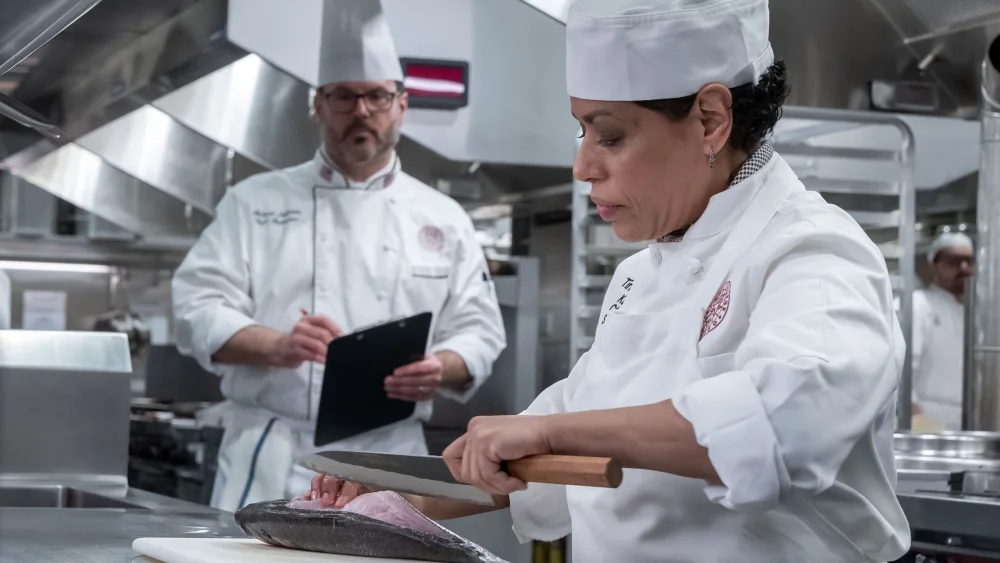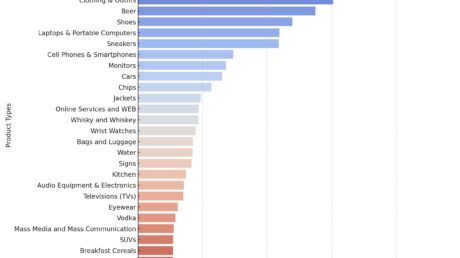“It’s an art, not just a knife,” prop master Laura Roeper says of the Japanese steel blades she sourced for the show
In The Bear, whose second season returned to Hulu last week, no prop is more significant than each chef’s respective knife. For a series known for showcasing the very real highs and exceptionally difficult lows inside the restaurant industry, getting the tool that every chef needs just right was imperative.
Take Carmy’s $2,000-plus Japanese steel knife, for example, that subtly hints for the first time at the tortured chef’s history working in fine dining restaurants, which he so bashfully tries to hide.
“We wanted him to have one thing that wasn’t pedestrian because he had already gone to New York, he had already gotten that James Beard Award,” the show’s prop master Laura Roeper tells Variety. “It’s from the Japanese Knives of Beverly Hills. They’re super famous, people know them.”
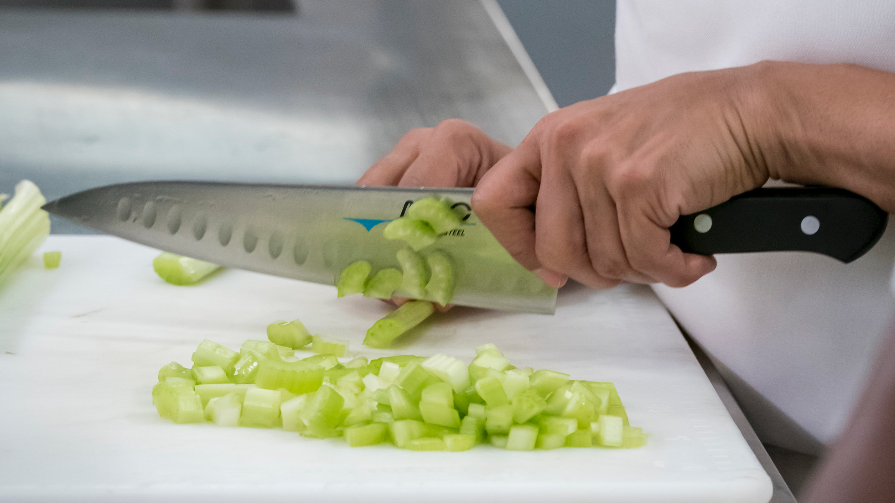
In season 1, it’s this same knife (thoughtfully adorned with his initials) that he accuses his coworkers of stealing only to find out that he had dropped it under the stove — a sign that he was losing his footing. And in Season 2, while Carmy and the rest of the team are working tirelessly to transform the old-school deli into a Michelin-worthy restaurant, he gives his most prized culinary tool to the newly promoted sous chef Tina, who has to ask him twice if he’s sure before taking it from his hands.
“It’s a symbol that he really is collaborating and letting her shine,” Roeper says. “It’s an art, not just a knife.”
From workhorse Mac knives to Japanese steels to cleaver and butcher blades, Roeper detailed (nearly) every single knife featured in “The Bear” and their significance. Here’s where you can buy your own:
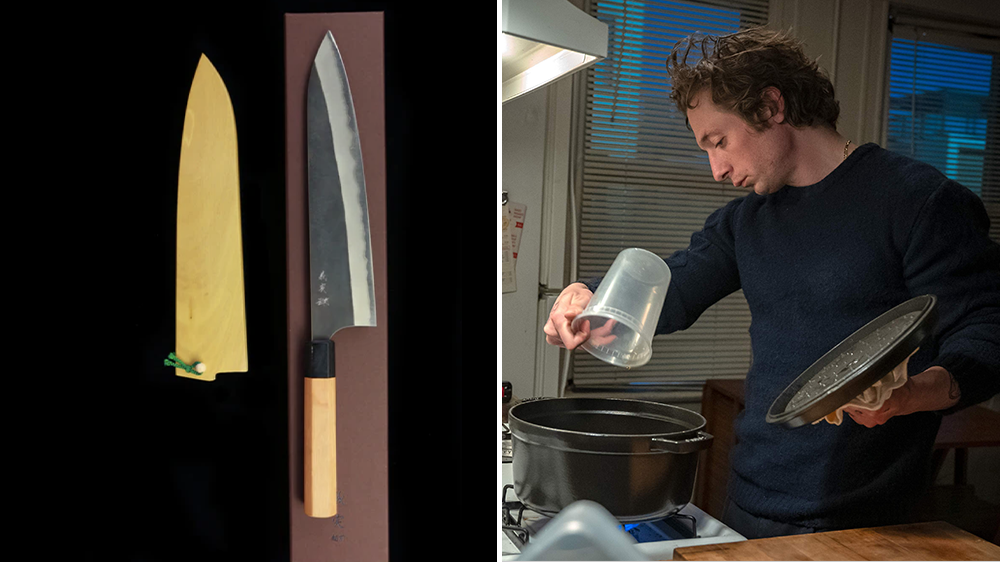
Yoshimi Echizen
Carmy switches between the Yoshimi Echizen 240mm and 150mm, in addition to the Gesshin 210mm, throughout seasons 1 and 2 — all of which are from Japanese Imports in Beverly Hills. “The thing about that place is all the Japanese knives are hand forged,” Roeper says. “Each family and each artist that we work with does a different type of hand forged steel.”
“And yes, they do come with a wooden sheath,” Roeper continues. “That’s to protect the knife, but also to protect anyone who would accidentally be messing with it. These knives will cut you so quickly, you won’t know what you’re doing. They are so sharp. They’re taken care of very differently. There’s only one or two places in Chicago that knows how to sharpen them.”
More featured knives from Japanese Steel Imports:
Yoshimi Echizen 150mm Stainless Clad Blue Super Kurouchi Wa-Petty ($220)
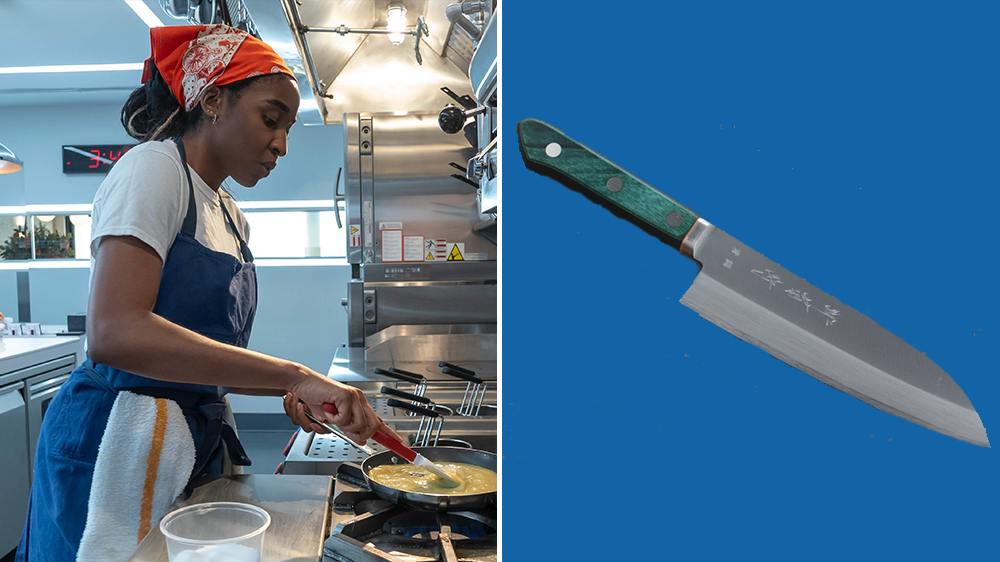
Sakai Kikumori Blue Steel Santoku 165mm
While slowly mastering the menu, Sydney can be seen chopping vegetables and herbs with this 165mm Sakai Kikumori knife, which boasts a gorgeous green Pakkawood handle. The Japanese-forged blade is from Seisuke Knives, from which Roeper also sourced knives for Tina and other sous chefs.
Other featured knives from Seisuke Knives:
Masakage Yuki White Steel No. 2 Nashiji Petty-Utility 120mm ($199)
Sakai Takayuki Stainless Steel Gyuto 180mm ($109)
Yoshimi Kato VG10 Nickel Damascus Petty-Utility 150mm ($319)
Kajin Cobalt Special Steel Damascus Gyuto 240mm ($329)
Hideo Kitaoka White Steel No. 2 Damascus Yanagiba 270mm ($309)
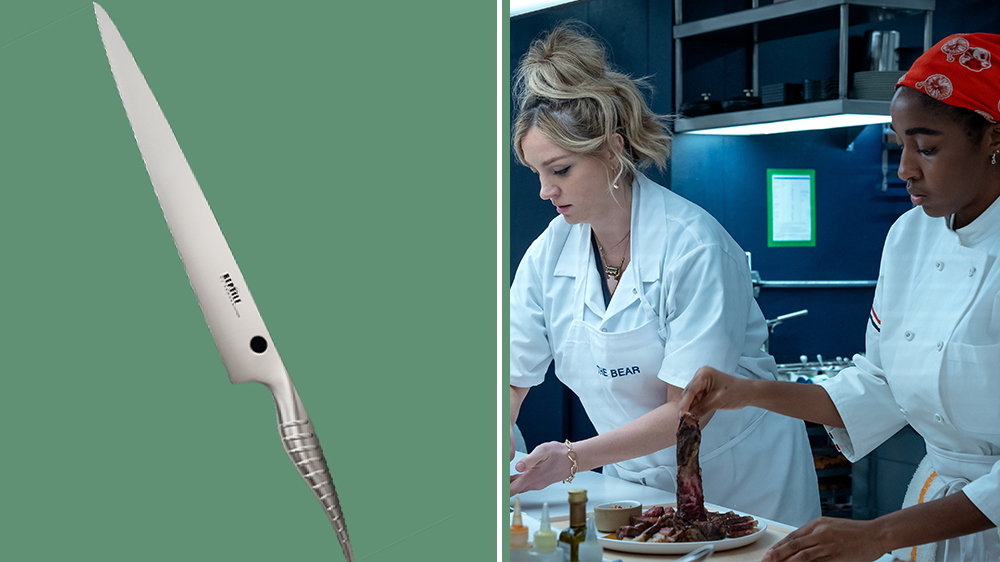
Samura Reptile Slicer Knife
Once the titular restaurant finally opens up in Episode 9, all of the sous chefs use these Samura knives, which are also Tina’s go-to blades earlier in the season. Roeper specifically sourced the Samura Slicer and Chef’s knives from the brand’s Reptile line.
“Throughout the season, you’ll see Tina use the Samura, which is a big knife she holds up in a few scenes,” Roeper says.
More featured Samura knives:
Samura Reptile Chef’s Knife ($115)
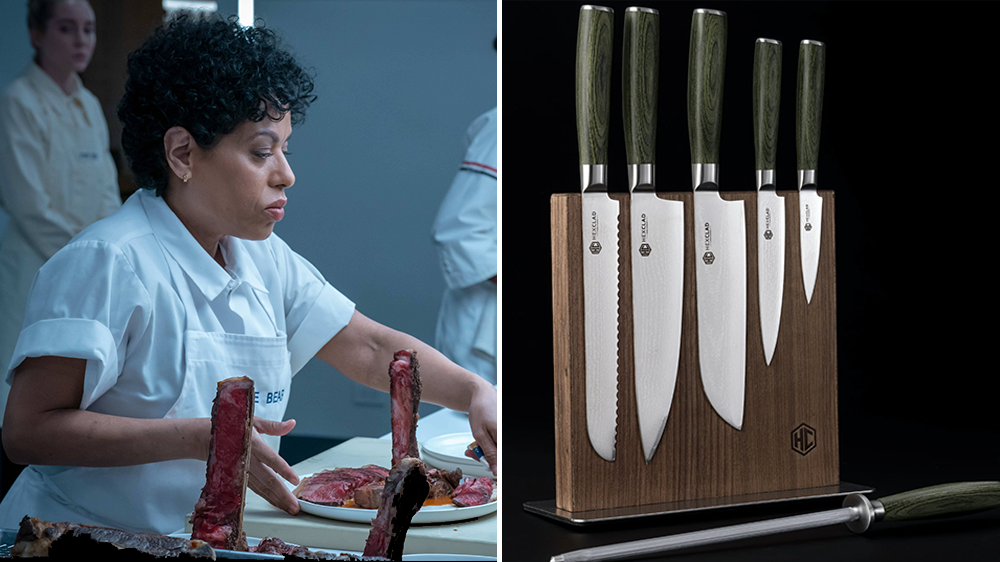
Hexclad 6pc Japanese Damascus Steel Knife Set
Most of the characters can be seen using one of the knives in this 6-piece Hexclad set at some point throughout the season. Edibiri, who often voiced which knives she liked to use in certain scenes, was particularly fond of the versatility that Hexclad offered.
“With Hexclad, we have a bunch of knives sitting out and Ayo herself would, be like, ‘I kind of like that one.’ I think it depends on the size. That’s the thing when you’re working with knives, every single knife is different. It’s a different size, it’s used for a different purpose.”
Hexclad’s bestselling set comes with six Japanese Damascus Steel knives: 8″ Chef’s Knife; 8″ Serrated Bread Knife; 7″ Santoku Knife; 5″ Utility Knife; 3.5″ Paring Knife; 9″ Honing Steel.
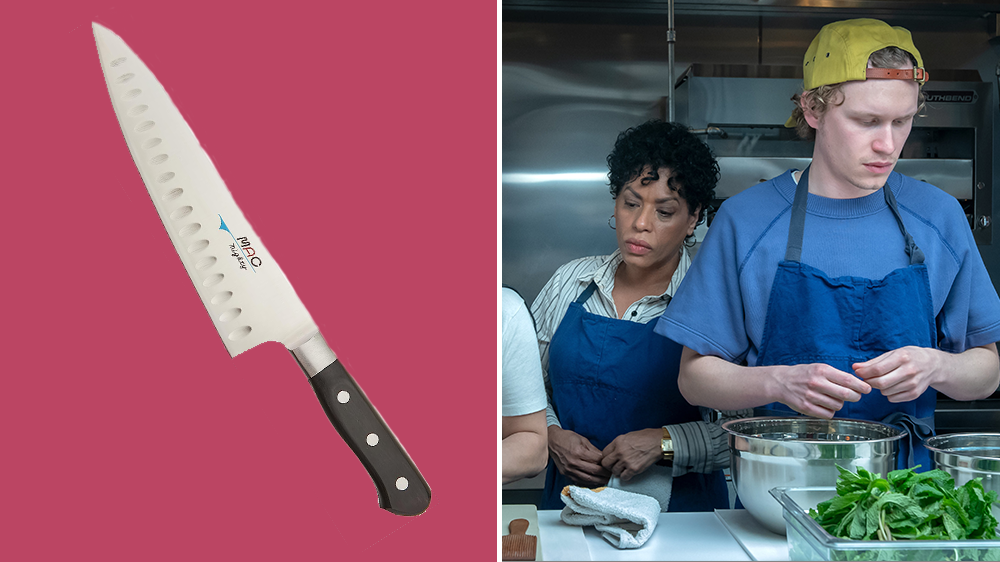
Mac Knife
Many of the sous chefs, particularly when they’re seen at their other restaurant jobs or culinary classes, can be seen with a classic workhorse knife.
“Almost every chef has Mac knives,” Roeper says. “That’s just a workhorse knife you can get anywhere. They’re also originally made in Japan but they’re more workhorse and more reasonable. A home chef probably wouldn’t know a Mac knife, but a culinary student would know a Mac knife.”
You can get three of them for $200, Roeper says, compared to the handmade blades she sourced from Portland or Beverly Hills that run for at least $300 apiece.
This piece was originally published by Variety and was written by Anna Tingley.

